 |
303rd Station Hospital |
Personnel
Mission Reports
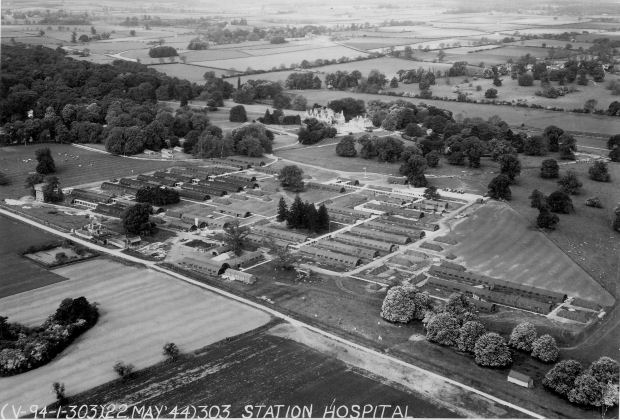
303rd Station Hospital
- click for larger image - photo courtesy of the Brian McGuire Family -
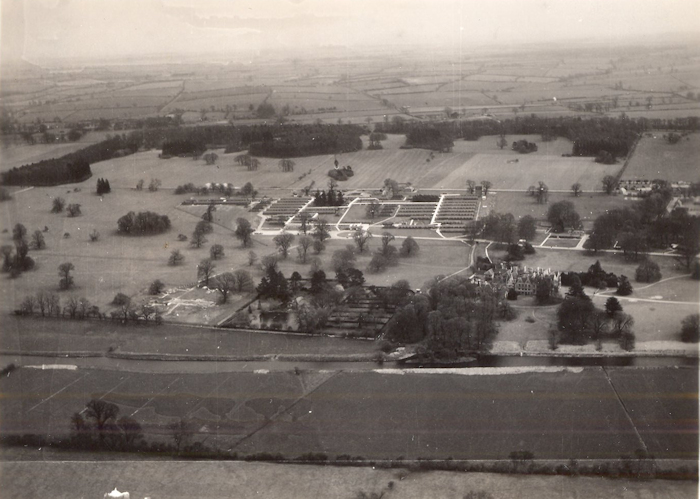
303rd Station Hospital
- click for larger image - photo courtesy of the C. Evan Johnson Family -
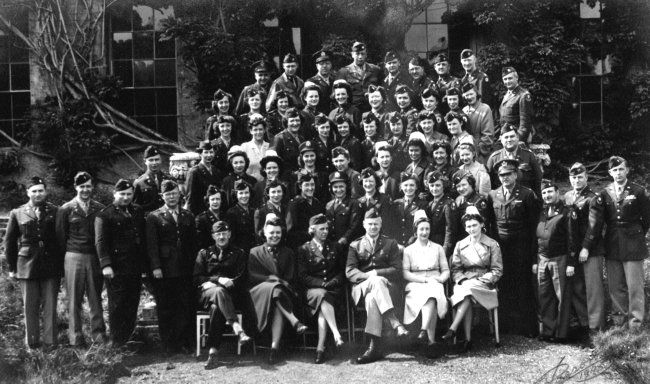
303rd Station Hospital Staff
- click for larger image - photo courtesy of Gracie Strange -

303rd Station Hospital Staff - November 1944
(L-R) Pat Maroney (Toledo, OH), 2Lt Astrid P. Hanson (Perth Amboy, NJ),
Capt Joseph Bregman, Donald Coughlin
- click photo for larger image - view back of photo -
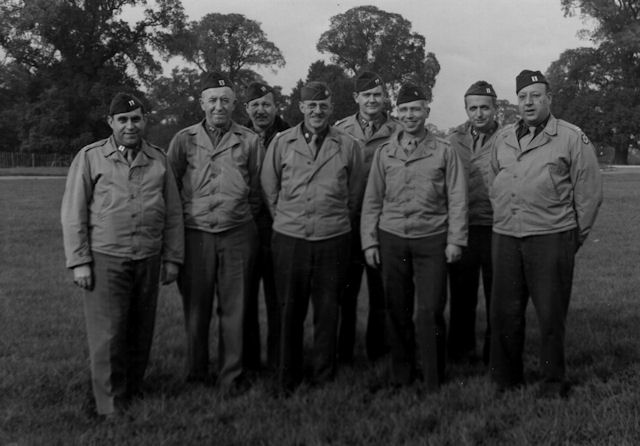
303rd Station Hospital Staff
- click photo for larger image - view back of photo -

303rd Station Hospital Staff Party
- click photo for larger image - view back of photo -
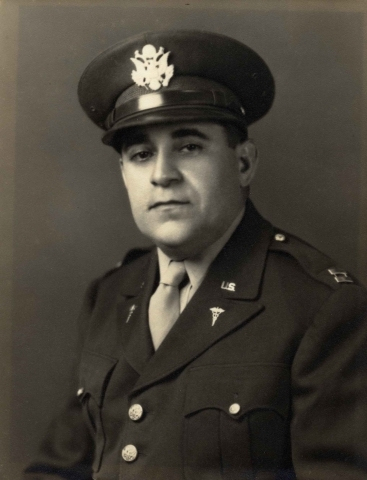
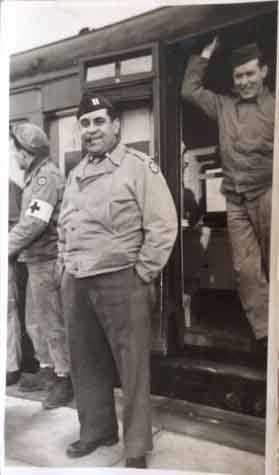
Capt Joseph Bregman - Evacuation train January 1945)
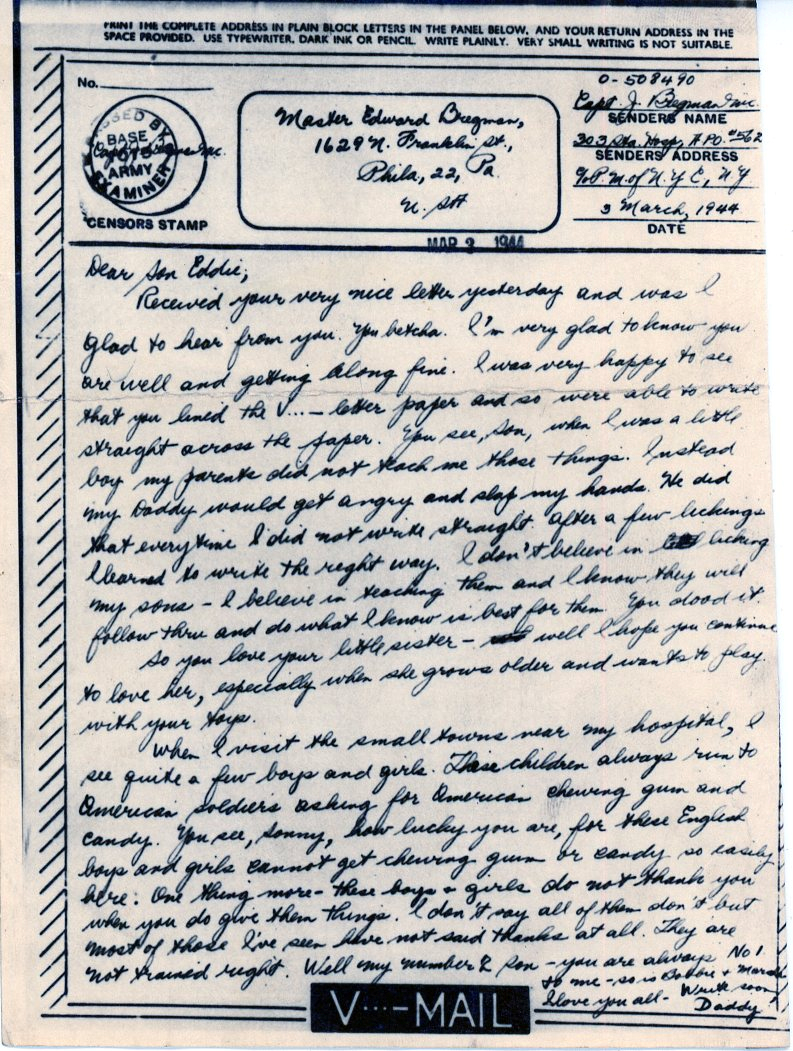
- above V-mail letter and 5 photos courtesy of Howard Bregman
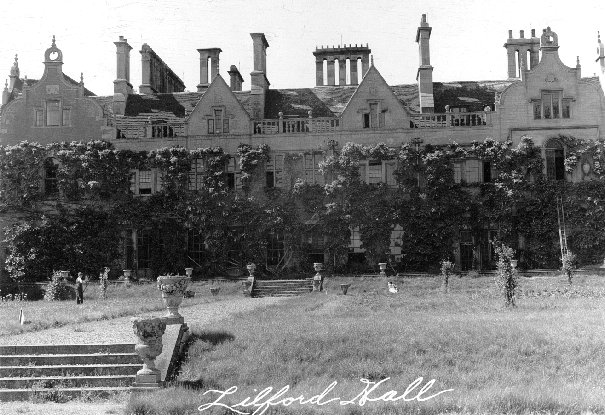
Lilford Hall - Family home of Lord Lilford since 1635
Nurses' Quarters - 303rd Station Hospital
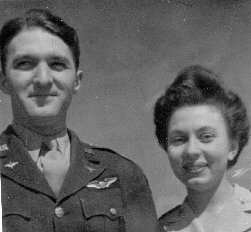 Major Louis "Mel" Schulstad (360th BS Lead Crew Pilot and 303rd BG(H) Group Operations Officer) & Lt Geraldine Broz - Married 2 May 1944 by Merritt O. "Chappie" Slawson in London. Best Man was Major Melvin T. McCoy. |
 Captain William E. Eisenhart (359th BS Lead Crew Pilot and Operations Officer) & Lt Mary Shore - Married 12 January 1945 by 303rd BG(H) Chaplain Merritt O. "Chappie" Slawson, at the Westminster Abbey Chapel in London. Best Man was Mel Schulstad. |
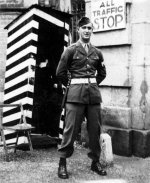
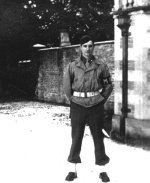
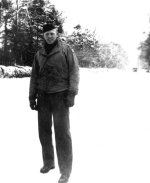
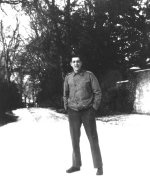
Hospital Gate Guards (L-R) Cpl Larry Bolton, PFC Barron, Pvt Berry, Cpl Norton
-click image for full-sized photo-
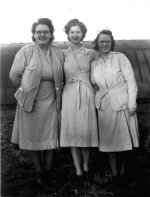
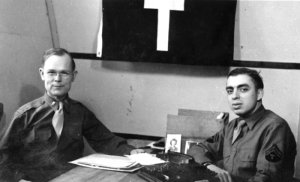
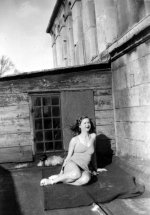
(left) Nurses Lt Rike, Lt Hanning, Lt McVay
(center) Protestant Chaplain Votaw and Cpl Tommy Ryan
(right) Lt Virginia Hanning sunning herself on the roof of Lilford Hall.
-click image for full-sized photo-
written from memory by Frances Nunn (Greenan)
In the spring of 1943, Major Thomas Thompson, an orthopedic surgeon at Walter Reed Army Medical Center, began recruiting personnel for an overseas medical unit. In July, 1943, the 303rd Station Hospital was formed at Camp McCall, North Carolina. Major Thompson was the original commanding officer of the unit.
1st Lt. Florine N. Thomason was assigned as Chief nurse. 2nd Lt. Gladys Gillilaud, head nurse of the enlisted mens orthopedic ward and 2nd Lt. Frances Nunn, head nurse of the Officers Orthopedic Ward at Walter Reed received orders red border on 10 July 1943 to report to the 303 Station Hospital at Camp McCall. Additional female personnel assigned were a dietitian, physical therapist, and three Red Cross Workers.
It is my recollection that the entire enlisted and male officers personnel were assigned to the unit at Camp McCall. During July and August we were engaged in overseas training including the infiltration course and the obstacle course. These exercises included the female personnel. I recall gas mask drills, many lectures and required swimming. During this training period major Thompson left the unit. LtCol. Smith was assigned as commanding officer of the unit.
On the 23rd of August 1943, the 303rd Station Hospital including thirty-nine male officers, five female officers, three Red Cross workers and 392 enlisted men were ordered "To proceed from Camp McCall to Camp Kilmer, New Jersey, to arrive no later than 1600, 31st August 1943. This is a permanent change of station, movement by motor and/or rail." We were, on our way. The entire unit less the advanced party left Camp McCall by troop train.
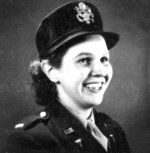 At Camp Kilmer we were joined by seventy-two 2nd
Lt. Army Nurses. Twenty-two came from Camp Campbell,
Ky, twenty-five from Camp Atterbury, Indiana, and
twenty-five from Fort Knox, Ky.
At Camp Kilmer we were joined by seventy-two 2nd
Lt. Army Nurses. Twenty-two came from Camp Campbell,
Ky, twenty-five from Camp Atterbury, Indiana, and
twenty-five from Fort Knox, Ky.
The short time we were at Camp Kilmer was full of activity. The nurses exchanged their white duty uniforms for tan and white seersucker field uniforms and caps. Their Class A uniforms were exchanged for O.D. issues. We were issued a set of fatigues and field equipment including gas masks, mess kits and canteens. I can remember forming lines for everything from shoes and boots to tent poles. By the time we left to embark on the "Empress of Russia," I believe we were glad to be going anywhere. Rumor had it our destination was "MURMANSK."
The "Empress of Russia" was a Canadian cruise ship. We left New York Harbor on 5 Sept. 1943, but had to return to port because we could not keep up with the convoy of troop ships. Finally on Sept. 8th-9th, we sailed again as part of a convoy of ships loaded with war supplies. We were in the middle of the convoy and could see ships in all directions from us. We sailed the northern route and were on board a total of twenty-one days.
There was much fog on the trip and a constant zig-zagging to avoid the threat of submarines. Our life preservers, "Mae Wests," were constant companions. We had many ship-board drills, and many rumors of ash cans being dropped. We finally landed in the Firth of Clyde at Glasgow, Scotland, where we were met by a bag-pipe brigade as we disembarked and a contingent of volunteers serving tea in our new canteen cups.
We traveled by train from Glasgow to Peterborough and to Thrapston, England, where we were met by Ambulances that took us to the 303rd Station Hospital location. The first night we slept in the hospital wards. The next morning, the nurses were taken to Lilford Hall where the nurses were quartered for the next two years.
Lord Lilford lived in one wing of the castle and was reported to have said he would just as soon have a Nazi bomb hit the castle as seventy-five American Army nurses. There was cold running water in the castle and an abolition hut in the rear for bathing. Our first test of survival was to keep the fireplace burning as there was no central heating.
Our first task in organizing the hospital wards was to standardize them. The medicine cabinets, linen closets, kitchens, etc. were all set up the same so that nursing personnel could easily adjust from one ward to another. They were also standardized so that we could work with "torches," as the English called them, if it became necessary. Nursing personnel worked twelve hour shifts -- 7 a.m. - 7 p.m. and 7 p.m. - 7 a.m. with two hours off during the shift if possible. There was an occasional 48 hour V.O.C.O.
We were originally designated as the 303rd Station Hospital with a 750 bed capacity. After D-Day we expanded the hospital to 1500 beds. This was done by erecting fifteen bed tents attached to the nissen hut wards.
We had as many as three hundred patients arrive at one time. I believe the rail-head was Thrapston. I remember the ambulances lined up to transport the patients. There were many patients with shrapnel wounds and many with frozen feet.
Col. Smith left the unit as Commanding Officer sometime during 1943. Col. Ira Abrahamson was assigned as Commanding Officer following Col. Smith. Col. Abrahamson was replaced by Col. Tillman A. Ragan who remained with the unit until we were broken up sometime in the spring of 1945.
Some of the nurses were transferred to the 230th General
Hospital for transfer to the Pacific Theatre. Following
cessation of hostilities in the Pacific some of the nurses
were assigned to various units for the Army of occupation or
for transfer to the U.S.A.